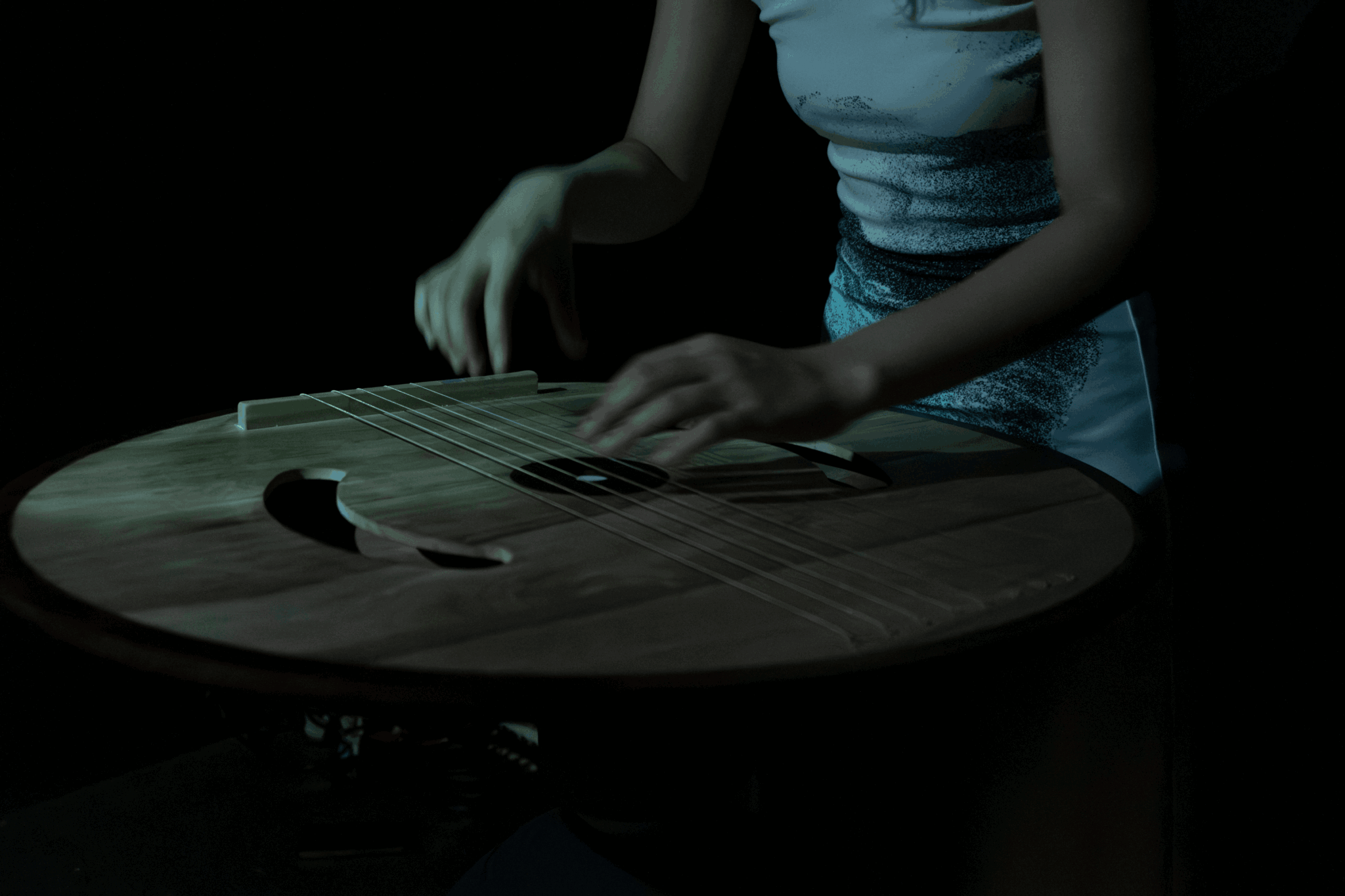Today we’d like to introduce you to Yanran Bi
Alright, so thank you so much for sharing your story and insight with our readers. To kick things off, can you tell us a bit about how you got started?
The idea of creating a sound and light instrument began to take shape when I first encountered Thomas Wilfred’s “Lumia Art,” an art form using light in a way he described as “as if one were witnessing a kind of sidereal choreography—a dance of comets and galaxies with the boreal aurora as back-drop and, beyond that, the velvet blackness of infinite, universal space.” I fell in love right away with the mysterious and magical visuals of light itself (in contrast with light bulbs).
Three years later, I began creating “YB51724,” a sound and light instrument that projects endless light patterns onto the ground based on how and where I perform with the strings, as my MFA thesis at Rhode Island School of Design about psychogeography–the effect of a geographical location on the emotions and behavior of individuals. Guy Debord’s sees two different factors of “ambiance” in the urban landscape: the soft ambientce — light, sound, time, the association of ideas — in contrast with the hard, the actual physical constructions. Featuring a self-designed and fabricated string instrument and a reactive light performance, “YB51724” is an extraction of the soft ambiance and an exploration of my imaginary landscape.
It was first performed at the RISD 2024 thesis show in May, later performed in Boston in August, and is now set to have its third performance in New York in October. I am now working on an album for the piece, aiming to complete it early next year.
We all face challenges, but looking back would you describe it as a relatively smooth road?
The piece has been a technical challenge for me in every regard and has undergone many iterations over the past year and a half. In the very first version, the string instrument took the form of a pudding shape with 21 strings that could be played by turning it, and the light was reflected through glass cups. There was even a placeholder for dry ice to create a foggy environment for projecting the light onto. The outcome was below expectations, and I was so disappointed that I put it away for two weeks before deciding to start over. The latest version bears no resemblance to the original, as every tiny detail has been changed after extensive testing. However, the core idea of immersing the audience in structures of light has remained unchanged. I guess that’s how I earned my “stubborn” comment.
Thanks for sharing that. So, maybe next you can tell us a bit more about your work?
The piece has a rather planetary appearance, with multiple differently sized wooden spheres layered together and a top 8-string instrument inspired by two traditional Chinese instruments, the Guqin and Zhongruan. A pickup microphone is embedded inside, connected to a loop pedal and mixer. Eight high-power multi-color LEDs are connected to each string and can be controlled through hand touches on the strings. While working on the electronic soldering and trying to make it as compact as possible to accommodate the large number of wires inside the structure, it almost feels like I am weaving with the wires.
I spent many nights working on it, striving to achieve the best visual effect from the lights. I would turn off the room lights, draw the curtains tight, and leave only the lights from the piece glowing in the surrounding darkness. Lying next to the lights, despite the excitement and sadness from the ups and downs of the process, I feel a sense of peace and quiet inside.
Alright so before we go can you talk to us a bit about how people can work with you, collaborate with you or support you?
As I am now working on the album and an upgraded version of the piece, I am open to any performance opportunities and composing collaborations.
Contact Info:
- Website: https://yanranbi.com/
- Instagram: https://www.instagram.com/yanran_biii/










